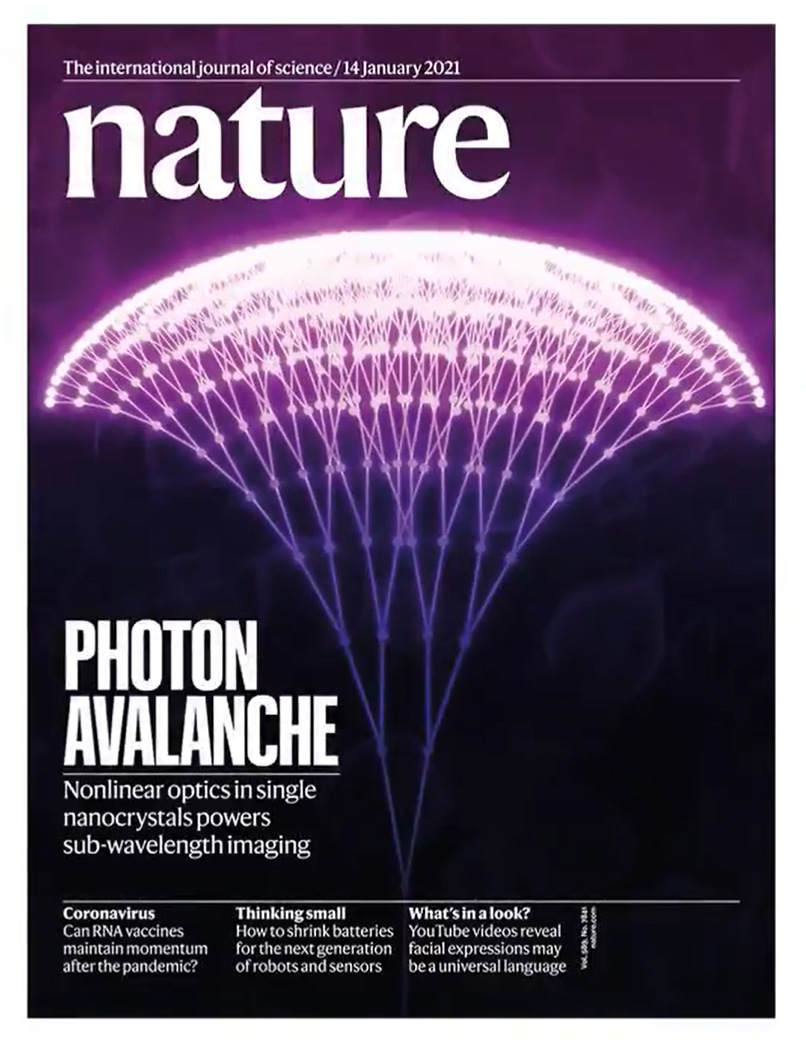Photon avalanche has been observed in new nanomaterials
An international team of scientists has developed new colloidal nanomaterials capable of giant photon avalanche upconvertion. This remarkable basic science breakthrough, in which the research group of Prof. Artur Bednarkiewicz from the PAS Institute of Low Temperature and Structure Research in Wrocław took part, has been described in the latest issue of Nature journal.

Photon avalanche is one of the most efficient processes of energy upconversion. This means, that obtained photons have higher energy than the energy of the photons used for excitation. Over the last 40 years, the phenomenon has not been very popular among researchers and has been rarely used with monocrystalline materials (> 10 mm in size), and if at all, mainly to find new laser lines. However, as predicted by theoretical calculations and preliminary demonstrations (in the authors’ earlier works), photon avalanche is such an interesting and unusual process that the possibility of observing it at a nanometric scale (1 nm = 0.000.000,001 meters) would help achieve progress in bio-imagining or nanothermometry. These inspired scientists to further research on avalanching nanoparticles.
Surprising discovery
In the latest issue of Nature, scientists from the USA, Poland and South Korea observed photon avalanching behavior in colloidal lanthanide-doped nanocrystals. The Polish-American-Korean research team has managed to obtain a new class of nanocrystalline materials known as avalanche nanoparticles (ANPs). Thanks to them, imaging with a conventional confocal microscope will be able to take place below the light diffraction limit (about 300-400 nm).
The new nanoparticles measuring just 25 nanometers (in diameter) contain a core made of nanocrystals doped with lanthanide ions (8% of the thulium ions, which absorb and emit light) and an insulating shell. What’s surprising is that with such a high concentration of thulium ions, a strong emission suppression is usually observed, here, however, the key element was the use of a specially selected near infrared excitation. Thanks to this combination, scientists achieved a spectacular increase in the intensity of emitted light. In the vast majority of luminophosphors, a two-fold increase in excitation intensity typically leads to a two-fold increase in luminescence intensity. In the ANPs, under the same conditions, the emission intensity was over 10,000 times higher. Similar behavior, although different from the point of view of the physical phenomenon itself, can be observed in a transistor or a laser.
Such a strong, non-linear luminescence was used for a simple super-resolution imaging of nanometric structures with 70 nm spatial resolution. The obtained results are cutting edge research which not only define new directions in materials science and photo physics of avalanche process at nanoscale, but also may allow for numerous applications such as ultrasensitive biological sensors (of pathogens or molecules, in the cells and tissues), sensors of physical quantities (such as temperature or pressure), neuromorphic computing, construction of mid-infrared photons detection, as new nano-lasers, or as in the original work, fluorescence super-resolution imaging below the light diffraction limit.
The research was conducted by several research groups from the following countries: the USA (University of Columbia, Lawrence Barkeley National Laboratory), Poland (Institute of Low Temperature and Structure Research of the Polish Academy of Sciences) and South Korea (Korea Research Institute of Chemical Technology). Among the authors are Prof. Artur Bednarkiewicz and MSc Agata Kotulska, both from the PAS Institute of Low Temperature and Structure Research.
The paper ”Giant nonlinear optical responses from photon-avalanching nanoparticles” has been published in the latest Nature journal.
Source of information: PAS Institute of Low Temperature and Structure Research
Cover image: Mikołaj Łukasiewicz
